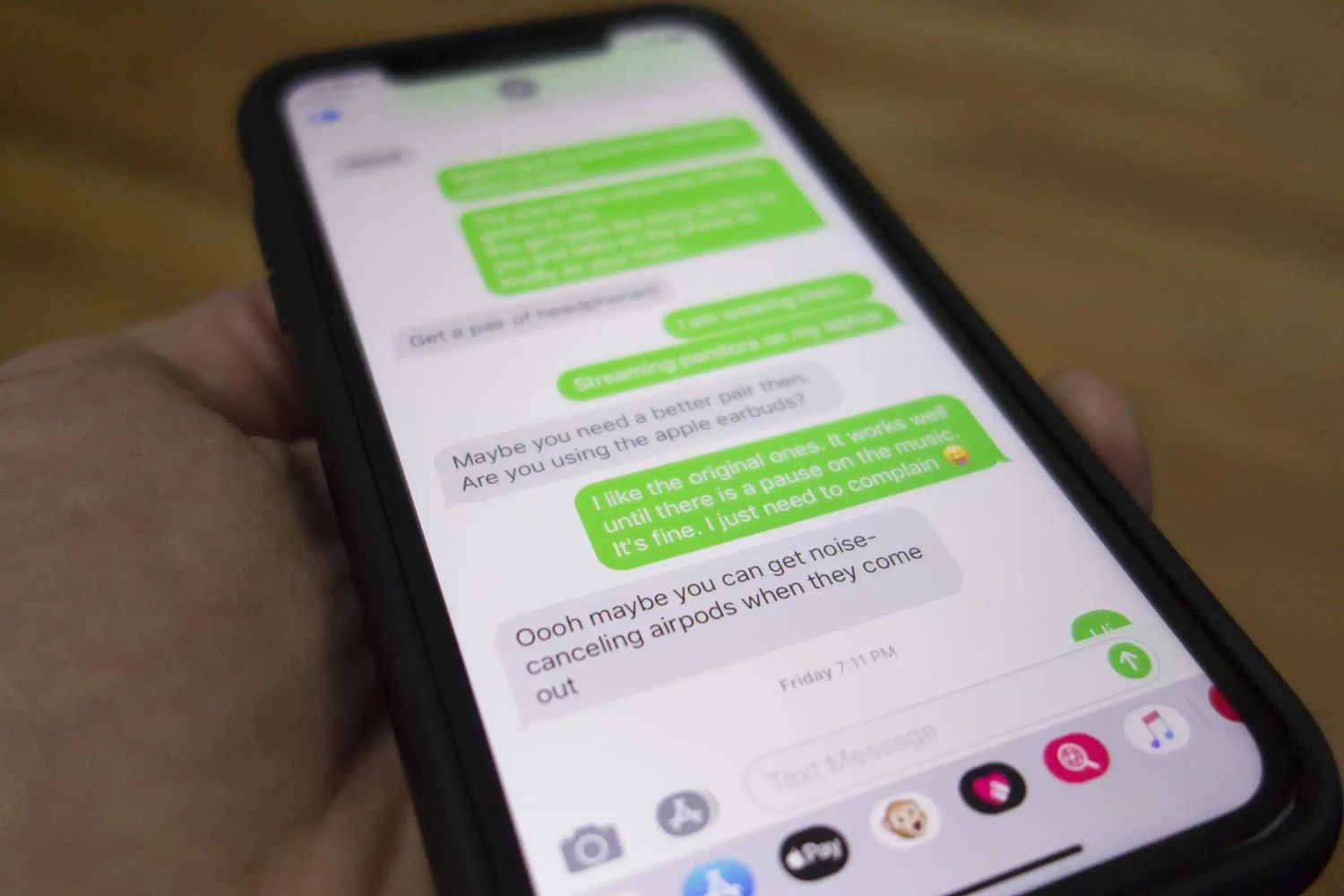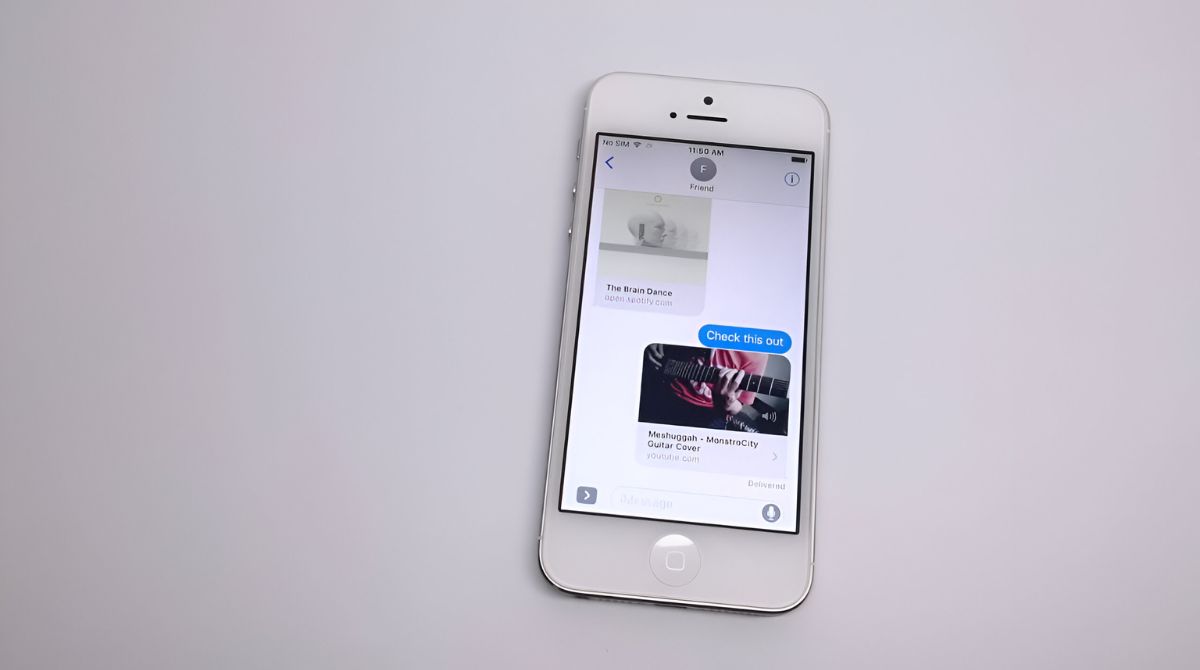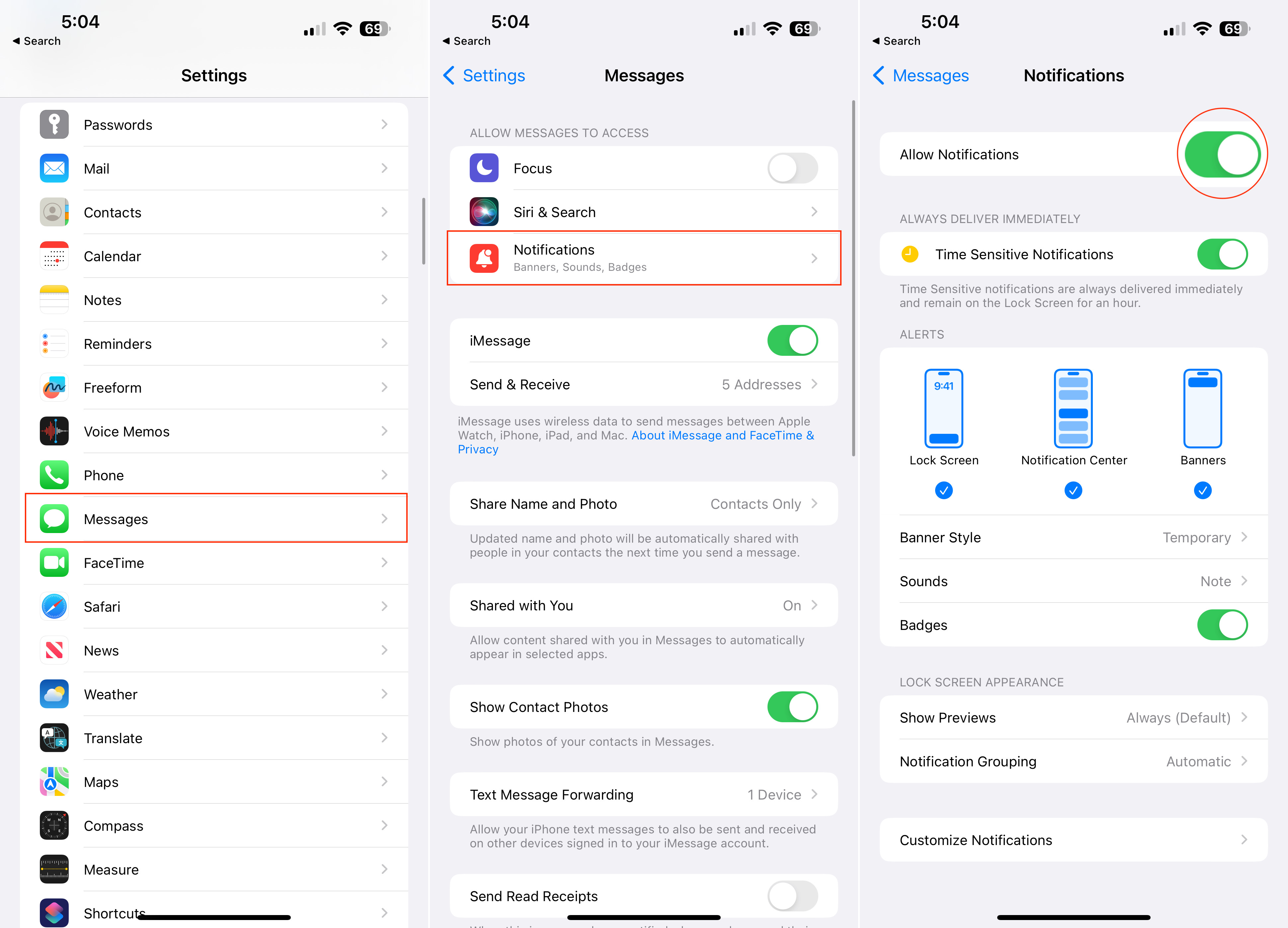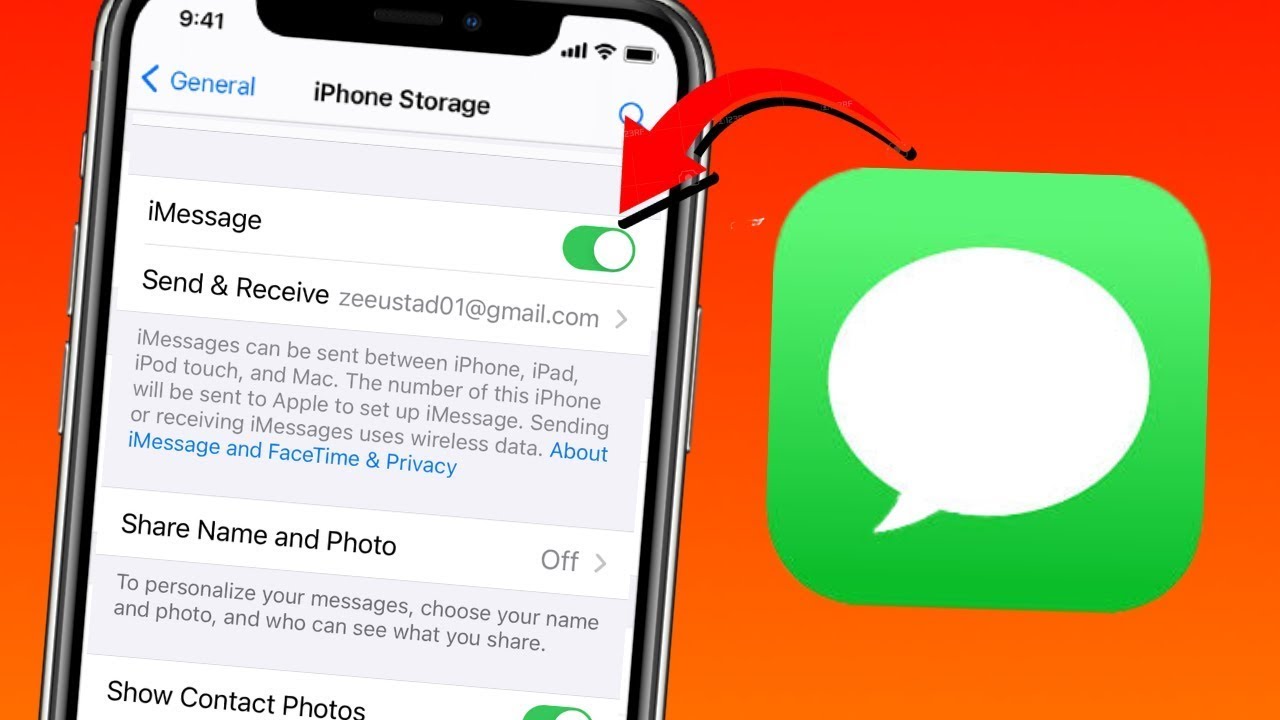Introduction
When it comes to instant messaging, there are numerous platforms available that allow users to communicate with each other seamlessly. Among these options, iMessage stands out as a popular choice for Apple device users. Launched in 2011, iMessage has transformed the way people exchange messages, making it easier and more convenient than ever before.
With iMessage, Apple users can send text messages, photos, videos, and other multimedia files to their contacts. It offers a range of features that enhance the messaging experience, such as read receipts, typing indicators, and the ability to send messages over Wi-Fi or cellular data. Furthermore, iMessage boasts end-to-end encryption, ensuring that users’ conversations are private and secure.
Having a dedicated messaging platform for Apple devices has greatly simplified communication among iPhone, iPad, Mac, and Apple Watch users. With a seamless integration across these devices, iMessage allows users to access their messages from any of their Apple devices, syncing conversations effortlessly.
In this article, we will delve into the journey and development of iMessage, its features and functionalities, as well as its impact on the way we communicate. Whether you’re a dedicated Apple user or simply curious about the history of instant messaging, join us as we explore the world of iMessage.
History of iMessage
Back in 2011, Apple introduced iMessage as part of the iOS 5 update, aiming to provide an enhanced messaging experience for iPhone, iPad, and iPod Touch users. This new messaging platform was designed to replace the traditional SMS (Short Message Service) with a more feature-rich and seamless solution.
iMessage was developed as an exclusive messaging service for Apple devices, allowing users to send free messages to other iOS users over Wi-Fi or cellular data. This meant that users could avoid SMS charges and communicate with fellow Apple device owners without any additional cost.
One of the key features that set iMessage apart from SMS was the ability to send multimedia files. Users could now exchange photos, videos, audio messages, and even share their location, all within the iMessage app. This added a new level of convenience and interactivity to messaging.
Another notable feature introduced with iMessage was the integration with existing messaging services. Users could seamlessly transition between SMS and iMessage, depending on the recipient’s device. This ensured that messages were delivered regardless of the recipient’s device, making communication effortless.
Over the years, Apple continuously improved and expanded the capabilities of iMessage. In subsequent iOS updates, new features such as stickers, reactions, and digital touch were introduced to enrich the messaging experience. These additions allowed users to express themselves with more creativity and personality.
With the release of iOS 10 in 2016, iMessage underwent a significant transformation. The platform opened up to third-party developers, who could now create iMessage apps and integrations within the messaging platform. This expansion allowed users to do more within iMessage, such as sending payments, ordering food, and playing games, all without leaving the app.
Overall, the history of iMessage showcases Apple’s commitment to improving and innovating the messaging experience for its users. From its humble beginnings as a replacement for SMS to its evolution into a full-fledged messaging platform, iMessage has revolutionized the way people communicate on Apple devices.
Features of iMessage
iMessage is packed with a wide range of features that elevate the messaging experience for Apple device users. Let’s explore some of the key features that make iMessage stand out:
- Text and Multimedia Messaging: Users can send text messages, photos, videos, audio messages, and even stickers within iMessage. The platform supports a variety of media formats, allowing for more dynamic and engaging conversations.
- Read Receipts: iMessage provides the option to enable read receipts, allowing users to see if their sent messages have been read by the recipient. This feature provides a higher level of communication transparency and eliminates the uncertainty of message delivery.
- Typing Indicators: When someone starts typing a message in iMessage, a ellipsis (…) appears, indicating that a response is being composed. This real-time feedback helps users gauge if the recipient is actively engaged in the conversation.
- End-to-End Encryption: Security is a top priority for Apple, and iMessage includes end-to-end encryption. This means that only the sender and recipient can access and read the messages, ensuring that conversations remain private and protected.
- Message Effects: iMessage allows users to add special effects to their messages, such as balloons, confetti, or lasers. These visually appealing effects add a touch of fun and personality to the conversation.
- Tapbacks: With Tapbacks, users can quickly react to a message by selecting from a range of predefined responses. These responses include thumbs up, thumbs down, heart, laughter, and more, providing a convenient way to express emotions without typing a full reply.
- Screen Sharing: Users on macOS devices can utilize the screen sharing feature within iMessage, allowing them to share their entire screen or a specific window with the recipient. This feature is particularly useful for collaboration and troubleshooting purposes.
- Group Chat: iMessage supports group chat functionality, enabling users to create and participate in group conversations. Users can add or remove participants, share media, and even customize the group name and profile picture.
These are just some of the many features that iMessage offers to enhance the messaging experience for Apple device users. The platform continues to evolve, introducing new and exciting features with each update, ensuring that iMessage remains a preferred choice for millions of users worldwide.
iMessage vs. SMS
When comparing iMessage to traditional SMS (Short Message Service), it becomes clear that iMessage offers several advantages and enhancements to the messaging experience. Let’s take a closer look at the key differences between iMessage and SMS:
Cost: One of the biggest advantages of iMessage over SMS is that iMessage messages are sent over Wi-Fi or cellular data, rather than using the carrier’s SMS service. This means that iMessage does not incur any additional charges for sending messages, making it a cost-effective option for communication.
Features: iMessage offers a wide range of features that SMS lacks. With iMessage, users can send multimedia files, enable read receipts, use typing indicators, and apply message effects. These features greatly enhance the messaging experience and allow for more dynamic and interactive conversations.
Platform Exclusivity: iMessage is limited to Apple devices, including iPhone, iPad, Mac, and Apple Watch. On the other hand, SMS is a universal messaging platform that is compatible with any mobile device. This means that iMessage can only be used for communication with other Apple device users, while SMS can reach anyone with a mobile phone.
Security: iMessage prioritizes user privacy and employs end-to-end encryption to ensure that messages cannot be intercepted or accessed by unauthorized individuals. SMS, on the other hand, does not offer the same level of encryption, making it potentially more vulnerable to security breaches.
Delivery Confirmation: With SMS, there is no guarantee of message delivery or read receipts. Users are left in the dark, unsure if their messages have been received or read by the recipient. iMessage, on the other hand, provides read receipts, indicating when a message has been read, providing users with more certainty and transparency in their communication.
Integration and Synchronization: iMessage seamlessly integrates with other Apple devices, allowing users to access their messages from their iPhone, iPad, Mac, and Apple Watch. Conversations sync across devices, ensuring that users can continue their conversations seamlessly. SMS, however, does not offer this level of integration and synchronization, requiring users to rely solely on their mobile device for messaging.
Overall, iMessage surpasses SMS in terms of features, cost-effectiveness (for Apple users), security, and integration with Apple devices. While SMS remains a universal option for communication, iMessage provides a more enhanced and tailored messaging experience for Apple device users.
iMessage on iOS devices
iMessage is an integral part of the iOS operating system, providing a seamless messaging experience for iPhone, iPad, and iPod Touch users. Let’s explore the features and functionality of iMessage on iOS devices:
Setup and Activation: Upon setting up a new iOS device, users are prompted to activate iMessage. This requires signing in with an Apple ID and enabling the iMessage feature. Once activated, iMessage automatically syncs conversations across all iOS devices associated with the Apple ID.
Text and Multimedia Messaging: Users can send text messages, photos, videos, and more within the iMessage app on their iOS devices. Additionally, they have access to a variety of built-in stickers and animations to add a touch of fun and creativity to their conversations.
Read Receipts and Typing Indicators: iMessage on iOS devices displays read receipts, indicating when a message has been read by the recipient. It also shows typing indicators, notifying users when the other person is in the process of composing a reply, ensuring real-time communication.
Message Effects: iOS users can add various effects to their messages, such as balloons, confetti, and fireworks. These effects make conversations more visually engaging and expressive, adding a playful element to the messaging experience.
Integration with Apple Services: iMessage seamlessly integrates with other Apple services, such as iCloud and Apple Pay. Users can access their iCloud Drive files, share their location, and send and receive money through Apple Pay, directly within the iMessage app.
Group Chats and Mentions: iOS users can easily initiate group chats in iMessage, allowing for group discussions and coordination. They can also mention specific participants in a group conversation, ensuring that their replies are directed to the intended individuals.
Animoji and Memoji: iOS devices equipped with Face ID technology offer the ability to create and use Animoji and Memoji within iMessage. Users can animate an emoji that matches their facial expressions or create a personalized Memoji that resembles their appearance.
Screen Sharing: iOS users can leverage the screen sharing feature introduced in iOS 15 to share their device screen in real time during an iMessage conversation. This is ideal for troubleshooting, collaborating, or simply showing something on the device.
iMessage on iOS devices continues to evolve with each iteration of the iOS operating system, introducing new features and enhancements to enrich the messaging experience. With its seamless integration, extensive functionality, and user-friendly interface, iMessage remains a versatile and preferred choice for iOS device users.
iMessage on Mac computers
iMessage extends beyond iOS devices and is also available on Mac computers, allowing users to seamlessly continue their conversations across multiple Apple devices. Let’s explore the features and functionality of iMessage on Mac:
iCloud Sync: iMessage on Mac syncs seamlessly with other iOS devices using the same Apple ID. This means that all messages, conversations, and attachments are automatically synced across devices, ensuring a consistent messaging experience.
Text and Multimedia Messaging: Mac users can send and receive text messages, photos, videos, and other multimedia files within the iMessage app. The ability to type using a full-sized keyboard provides a comfortable and efficient messaging experience.
Continuity and Handoff: With Continuity, Mac users can start a conversation on their iPhone or iPad and seamlessly transition to their Mac computer. Handoff allows users to pick up where they left off, ensuring that they can continue their conversations across devices effortlessly.
Read Receipts and Typing Indicators: Similar to iMessage on iOS devices, iMessage on Mac displays read receipts and typing indicators, providing users with real-time status updates on their conversations.
Message Effects: Mac users can add various message effects, such as balloons, confetti, and animations, to their messages within iMessage. This adds a touch of visual flair and personalization to the communication experience.
Shared Links and Files: iMessage on Mac allows users to share links, documents, and files with others directly within the conversation. Additionally, Mac users can preview and open web links, photos, and videos without leaving the app.
Screen Sharing: One unique feature of iMessage on Mac is the ability to initiate screen sharing during a conversation. Users can share their entire screen or a specific window with the recipient, making it convenient for collaborations or troubleshooting sessions.
Integration with macOS Features: iMessage on Mac seamlessly integrates with macOS features, such as the built-in Contacts app, Siri, and Notification Center. This integration enhances the messaging experience by providing easy access to contacts, voice commands, and message notifications.
iMessage on Mac offers a cohesive messaging experience for Apple users, allowing them to stay connected and engaged with their conversations, whether they are using their iPhone, iPad, or Mac computer. With its seamless integration, extensive features, and iCloud sync, iMessage on Mac continues to be a valuable tool for communication and collaboration.
iMessage on Apple Watch
iMessage extends its reach to the wrist with the integration of iMessage on Apple Watch. This allows users to conveniently send and receive messages directly from their wearable device. Let’s explore the features and functionality of iMessage on Apple Watch:
Message Notifications: Apple Watch users receive instant notifications for incoming messages, allowing them to stay connected even when their iPhone is not within immediate reach. These notifications include the sender’s name and a preview of the message.
Quick Replies: Apple Watch offers a range of quick replies that users can send as responses to messages. These pre-written responses allow for efficient and timely communication without the need to type out a full reply. Additionally, Apple Watch supports Scribble, enabling users to write responses and messages directly on the watch face.
Dictation: iMessage on Apple Watch supports dictation, allowing users to respond to messages by speaking directly into their watch. The watch’s built-in microphone accurately transcribes spoken words into text, making it convenient for quick and hands-free replies.
Emojis and Stickers: Apple Watch users can add emojis and stickers to their messages, bringing a touch of creativity and personalization to their conversations. The watch’s interface makes it easy to browse and select from a variety of colorful emojis and engaging stickers.
Handwritten Messages: Apple Watch supports sending handwritten messages, allowing users to write out their messages directly on the watch face using their finger or an Apple Pencil. This adds a personal and expressive element to text-based conversations.
Message Dictation: Apple Watch enables users to dictate their messages, ensuring quick and accurate responses to incoming messages. The watch’s built-in microphone captures spoken words, converting them into text format to be sent as messages.
Audio Messages: Apple Watch users can send and receive audio messages, allowing for a more immersive and expressive messaging experience. Users can record voice messages by pressing and holding the microphone button on the watch face.
Integration with iPhone: iMessage on Apple Watch seamlessly integrates with the connected iPhone. This means that messages sent or received on the watch are synced with the iPhone’s Messages app, providing a consistent messaging experience across both devices.
iMessage on Apple Watch brings convenience, efficiency, and accessibility to messaging right on the user’s wrist. Its integration with other Apple devices, coupled with its range of messaging features, allows Apple Watch users to stay connected and communicate effortlessly, even when their iPhone is not easily accessible.
iMessage on iCloud
iMessage on iCloud brings additional convenience and synchronization capabilities to Apple device users. With iMessage on iCloud, users can seamlessly access their messages across multiple devices, ensuring a consistent messaging experience. Let’s explore the features and benefits of iMessage on iCloud:
Synced Conversations: iMessage on iCloud synchronizes conversations, message history, and attachments across all Apple devices associated with the same Apple ID. This means that users can start a conversation on one device and continue it seamlessly on another without missing a beat.
Message Backup: iMessage on iCloud automatically backs up messages, ensuring that important discussions and attachments are safe and secure. In the event of a device change or data loss, users can easily restore their messages from iCloud, preserving their conversation history.
Storage Optimization: iMessage on iCloud helps optimize device storage by offloading older messages and attachments to iCloud. This ensures that the device storage is not overwhelmed with a large amount of message data, leading to improved device performance and storage management.
Searchable Message History: With iMessage on iCloud, users can search for specific messages, contacts, or keywords within their message history. This allows for quick and easy retrieval of important information from past conversations.
Cross-Device Deletion: iMessage on iCloud ensures that deleting a message, conversation, or attachment on one device also reflects the deletion across all other connected devices. This streamlines the message management process and ensures consistency across all Apple devices.
Seamless Switching between Devices: With iMessage on iCloud, users can effortlessly switch between their iPhone, iPad, and Mac without missing any messages. Whether at home, in the office, or on the go, users can stay connected and communicate seamlessly without disruptions.
Reduced Network Bandwidth: iMessage on iCloud optimizes network bandwidth usage by only delivering new messages and downloading recent message threads. This helps conserve data usage and reduces the strain on the network, providing a smoother messaging experience.
Message Security: Messages sent and received through iMessage on iCloud benefit from Apple’s industry-leading end-to-end encryption, ensuring that user conversations remain secure and private. Messages are encrypted and decrypted only on the sender’s and recipient’s devices, with no intermediate access to the content.
iMessage on iCloud enhances the overall messaging experience for Apple device users by providing seamless synchronization, efficient storage management, and improved accessibility. With its ability to backup messages, optimize storage, and preserve message history across devices, iMessage on iCloud ensures that users can stay connected, organized, and secure in their everyday communication.
iMessage’s Impact on Communication
iMessage has had a significant impact on the way people communicate, offering a range of features and functionalities that have transformed the messaging experience. Let’s explore the key ways in which iMessage has influenced communication:
Cost-Effective Messaging: By allowing Apple device users to send messages over Wi-Fi or cellular data, iMessage has reduced reliance on traditional SMS services and has helped users save on messaging costs. The ability to send text, photos, videos, and other multimedia files without incurring extra charges has made communication more accessible and affordable.
Enhanced Messaging Experience: iMessage has introduced a variety of features and capabilities that go beyond traditional SMS. From read receipts and typing indicators to message effects and stickers, iMessage provides users with richer and more interactive ways to express themselves and engage in conversations.
Seamless Integration Across Devices: iMessage’s integration with Apple devices allows for seamless synchronization and continuity in conversations. Users can begin a conversation on their iPhone, continue it on their iPad or Mac, and even access their messages on their Apple Watch. This cross-device integration eliminates disruption and ensures a consistent conversation experience.
Improved Privacy and Security: With end-to-end encryption, iMessage prioritizes user privacy and ensures that messages are sent and received securely. This heightened level of security has given users peace of mind, knowing that their conversations are protected from unauthorized access and surveillance.
Convenient Collaboration and File Sharing: iMessage facilitates collaboration by allowing users to easily share files, documents, and multimedia within the conversation. This makes it convenient for coworkers, friends, and family members to exchange important information, coordinate plans, and collaborate on projects without the need for separate file-sharing platforms.
Expressive and Fun Communication: The inclusion of message effects, tapbacks, emojis, stickers, and features like Animoji and Memoji has made conversations more expressive, engaging, and enjoyable. Users can add a personal touch to their messages and convey emotions effectively, bringing a sense of fun and creativity to their communication.
Efficient Message Management: With iMessage, users can easily search for specific messages, manage conversations, and delete messages across all connected devices. This streamlines message organization and retrieval, making it easier to find important information and maintain a clutter-free messaging environment.
Global Connectivity: iMessage’s availability worldwide has fostered global connectivity, allowing Apple device users from across the globe to connect and communicate seamlessly. This has facilitated relationships, business connections, and cultural exchanges on a global scale.
iMessage has revolutionized the way people communicate by providing a feature-rich and innovative messaging platform. From cost-effective messaging and enhanced user experience to improved privacy and global connectivity, iMessage continues to shape the landscape of modern communication.
Conclusion
iMessage has undoubtedly transformed the way we communicate on Apple devices. With its seamless integration, extensive features, and commitment to privacy and security, iMessage has revolutionized messaging for millions of users worldwide.
Through its evolution over the years, iMessage has enhanced the messaging experience by offering a wide range of features and functionalities. From the ability to send text messages, photos, and videos, to the inclusion of read receipts, typing indicators, and message effects, iMessage has made conversations more dynamic, expressive, and engaging.
The seamless integration of iMessage across Apple devices has further simplified communication. Users can start a conversation on their iPhone and seamlessly continue it on their iPad, Mac, or even their Apple Watch. This cross-device integration ensures that users can effortlessly connect with others, regardless of the device they are using.
iMessage’s commitment to privacy and security is evident through its implementation of end-to-end encryption. This ensures that user conversations remain private and protected from unauthorized access, giving users a heightened level of confidence in the security of their messages.
Furthermore, iMessage has improved collaboration and file sharing by allowing users to easily share documents, files, and multimedia within conversations. This has streamlined communication and made it more convenient for coworkers, friends, and family members to exchange information and work together.
Overall, iMessage has had a profound impact on communication. It has democratized messaging by providing a cost-effective alternative to traditional SMS services for Apple device users. With its rich features, seamless integration, and commitment to privacy, iMessage has redefined how we connect, express ourselves, and collaborate in the digital age.

























